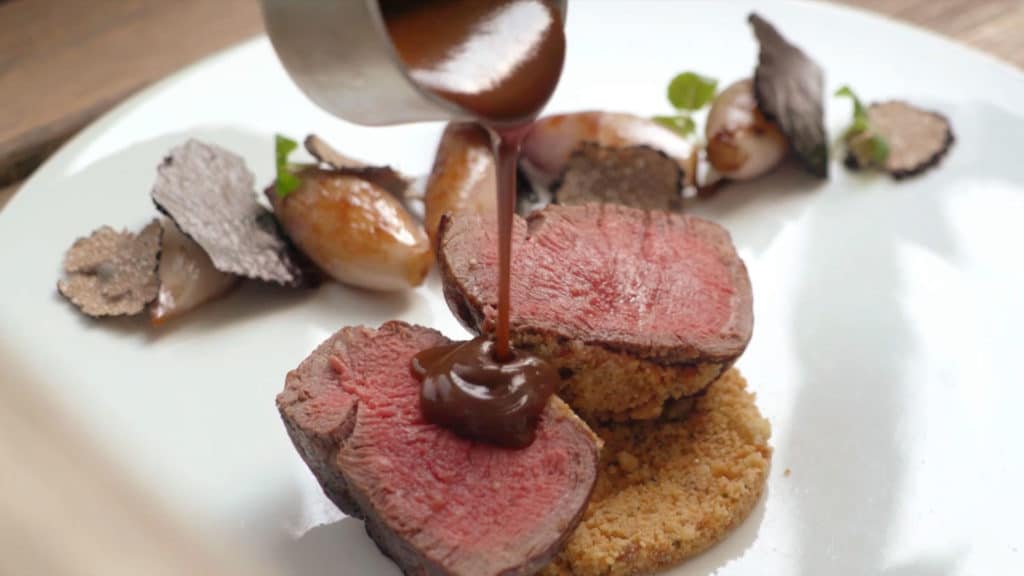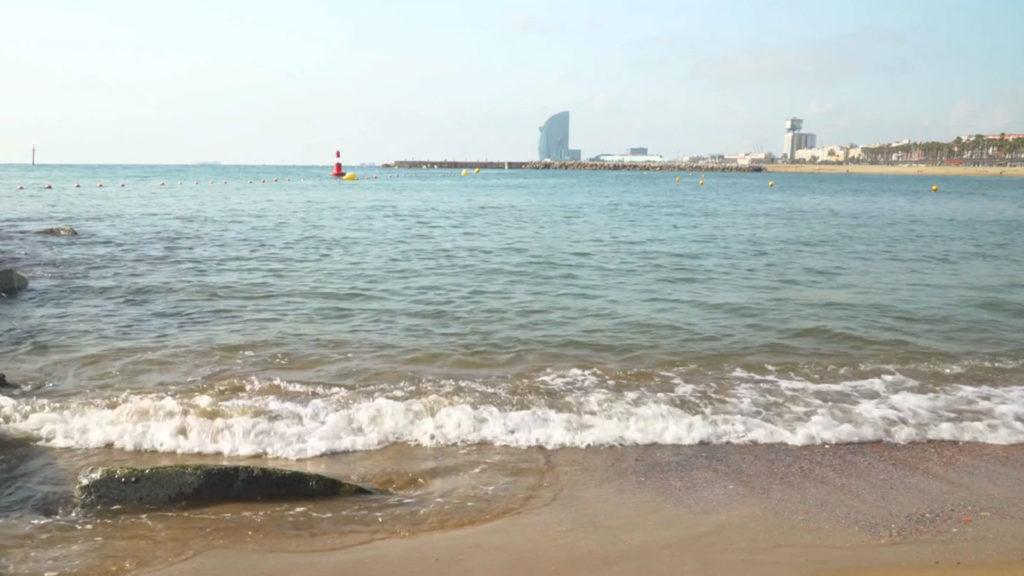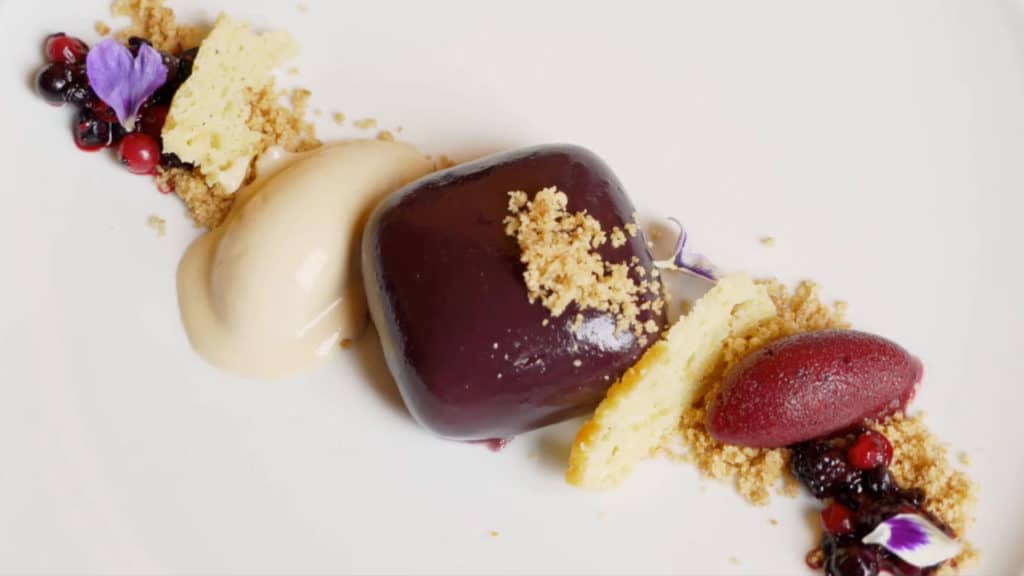At just 25 years old, Eva de Gil already helms the kitchen at Batuar, an upmarket, colonial-style restaurant tucked into Barcelona’s Cotton House Hotel, Autograph Collection. The restaurant feels blissfully removed from the steadfast bustle of the city’s Gran Via thoroughfare, which lies just outside its glass-fronted terrace.
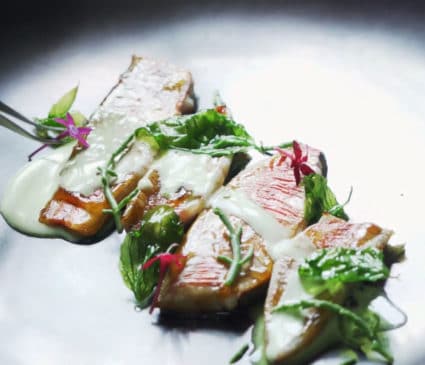
A native Catalonian, the young chef has appreciated the region’s culinary gifts since childhood. By way of contrasting landscapes — from year-round snow-capped mountains to grassy plains, fertile forests and the glistening cerulean coastline of the Mediterranean Sea — the region is robust with indigenous flora and fauna of the highest quality.
“Seasonal standout ingredients inspire our dishes,” said Chef de Gil. “Winter calçots [indigenous green onions] are grilled and served with a fresh romesco sauce. In spring, artichokes are eaten whole or cooked into rice dishes, while in summer we feature grilled prawns, sardines and melon paired with cured jamón slices. Finally, in autumn, game meats are popular, as are dishes made with pumpkin or sweet potatoes.”
Though cooking techniques vary between countries and even regions, as a whole, products used in Mediterranean cuisine comprise the same basic principles: All are local, seasonal and prepared using clean, simple methods.
“Since medieval times, Catalonia has prioritized the use of regional products,” said Chef de Gil. “Our cuisine is a mix between our territories, natural products, tradition and creativity.”
Eva de Gil’s passion for regional cuisine sparked when she was 14, vacationing with her family in Tuixent-la Vansa, a ski resort in Spain’s northeast surrounded by bucolic hiking trails and pine-peppered forests. To earn pocket money, she worked as a prep cook in a number of local eateries.
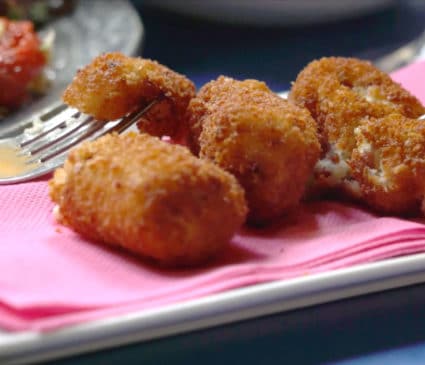
By 16,Chef de Gil had signed her first cooking contract and was inspired by that restaurant’s head cook. “I learned a lot under that cook’s tutelage,” said de Gil. “Her cuisine was hearty and simple, what one might find at grandma’s house, but she possessed exceptional culinary knowledge that encouraged me to experiment and add my own special touches.”
When her mentor fell ill, Chef de Gil eagerly stepped in to oversee the kitchen. During this time, she prepared a basic dish with inventive seasoning, and it was met with a round of applause. In that moment, she knew she’d found her vocation.
Our cuisine is a mix between our territories, natural products, tradition and creativity.
EVA DE GIL
Urged by family to finish her required studies before enrolling in culinary school, Chef de Gil bided her time by working as a weekend cook at a small bar in Barcelona, her first time experiencing the Catalan capital acclaimed for exceptional culinary offerings.
Aside from the bevy of tapas bars, multicultural eateries and Michelin-starred stalwarts, Barcelona’s lyrical landscape of mountains and Mediterranean Sea provided Chef de Gil with a seasonal abundance of aquatic flavors, market-fresh produce, artisan cheeses and farm-fed meats.
After a stint at Hofmann Culinary School and an internship at Akelarre, a renowned three-Michelin-star restaurant in foodie haven San Sebastian, she returned to Barcelona and encountered a job opportunity too tempting to pass up.
A YOUNG CHEF’S STAR RISES
At Home in Cotton House
“I came across the Cotton House Hotel’s kitchen staff position via a friend who was doing her internship there,” said Chef de Gil. “It had never even crossed my mind to work in a hotel restaurant, but I was certainly intrigued by the challenge.”
A short eight months later, she was offered the position of executive chef. “I was blown away, but it was also at that moment I realized how much my experiences had prepared me to run a kitchen,” said Chef de Gil. “You never know until you actually do it how many tools are at your disposal.”
When designing new dishes, I am most inspired by travel.
EVA DE GIL
Sitting in a quiet corner of Batuar’s indoor dining space, whimsically lined with rows of spotlighted porcelain dinnerware and glasses, Chef de Gil describes her cuisine as decidedly Mediterranean with signature components.
“I work with Mediterranean products elaborated in the nouvelle cuisine style,” said Chef de Gil. “Additionally, whenever possible, I incorporate seasonal ingredients from Catalonia because, tradition aside, a close proximity means that products are fresher, thus taste better and are much more affordable.”
This is not to say, however, that international products do not influence Chef de Gil. “When designing new dishes, I am most inspired by travel,” she said. “While it’s true that without key ingredients found outside Spain, we cannot replicate a dish rivaling the taste of the original, we can instead bring back techniques to utilize on our own bountiful provisions.”
One such dish is Latin Americanceviche, a raw seafood salad traditionally marinated with lime, spices, chili peppers and red onions — often paired with lettuce, corn and boiled sweet potato.
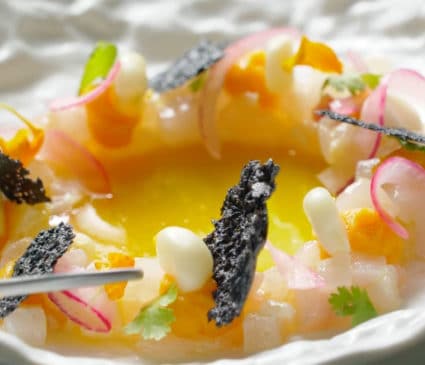
“Ceviche is one of a handful of items I’ve kept on the Batuar menu since we created it,” said de Gil. “While we cure the fish in a similar fashion as the native dish, my version transforms it into a Mediterranean specialty by elevating the regional corvina fish with a crunchy squid ink sauce and a sweet potato purée. With such a close proximity to the sea, it would be a shame not to take full advantage of our resources.”
With such a close proximity to the sea, it would be a shame not to take full advantage of our resources.
EVA DE GIL
And in a city famous for over-the-top degustation menus, Chef de Gil has made the conscious decision to exclude them from her offerings, opting instead for an eclectic mix of tapas and mains.
“One thing I adore about Mediterranean culture is that the act of getting together and sharing meals with family and friends is a very important tradition,” she said. “We associate food with social moments, and via this connection pay closer attention to what we are eating, since dishes are often shared as tapas. Our tapas menu adapts to all types of profiles, from those that prefer a few bites with cocktails to groups that enjoy a meal-size sampling of different dishes.”
At any given time, tapas classics like Iberian ham croquettes are offered alongside more eclectic varieties stuffed with duck or spinach and dates, while à la carte dishes range in choice from hake fish in an almond and garlic “soup” with a side of miso and prawns tartar to regional pork served in a green “mojo” sauce with onions.
Chef de Gil hopes to one day return to the scenic region that started it all. “My long-term dream is to open my own restaurant in the Pyrenees Mountains,” she said. “But that is still years down the line. Batuar is still evolving, and I’m motivated to continue developing my techniques here. Plus, I’d like to eventually return the favor for this unique opportunity. For me, the most enjoyable part of my job is that I never sit still; we are always experimenting with new products and flavorings.”
For more Mediterranean culinary inspiration, check out the A Taste of Sun recipe collection, featuring some of our chefs’ favorite dishes, including those from Cotton House Hotel, Autograph Collection, like Red Mullet with Onion Sauce, Basil & Seaweed, Ceviche of Sea Bream & Golden Passion Fruit and Barcelona Sirloin Steak with Chocolate & Shallots.
